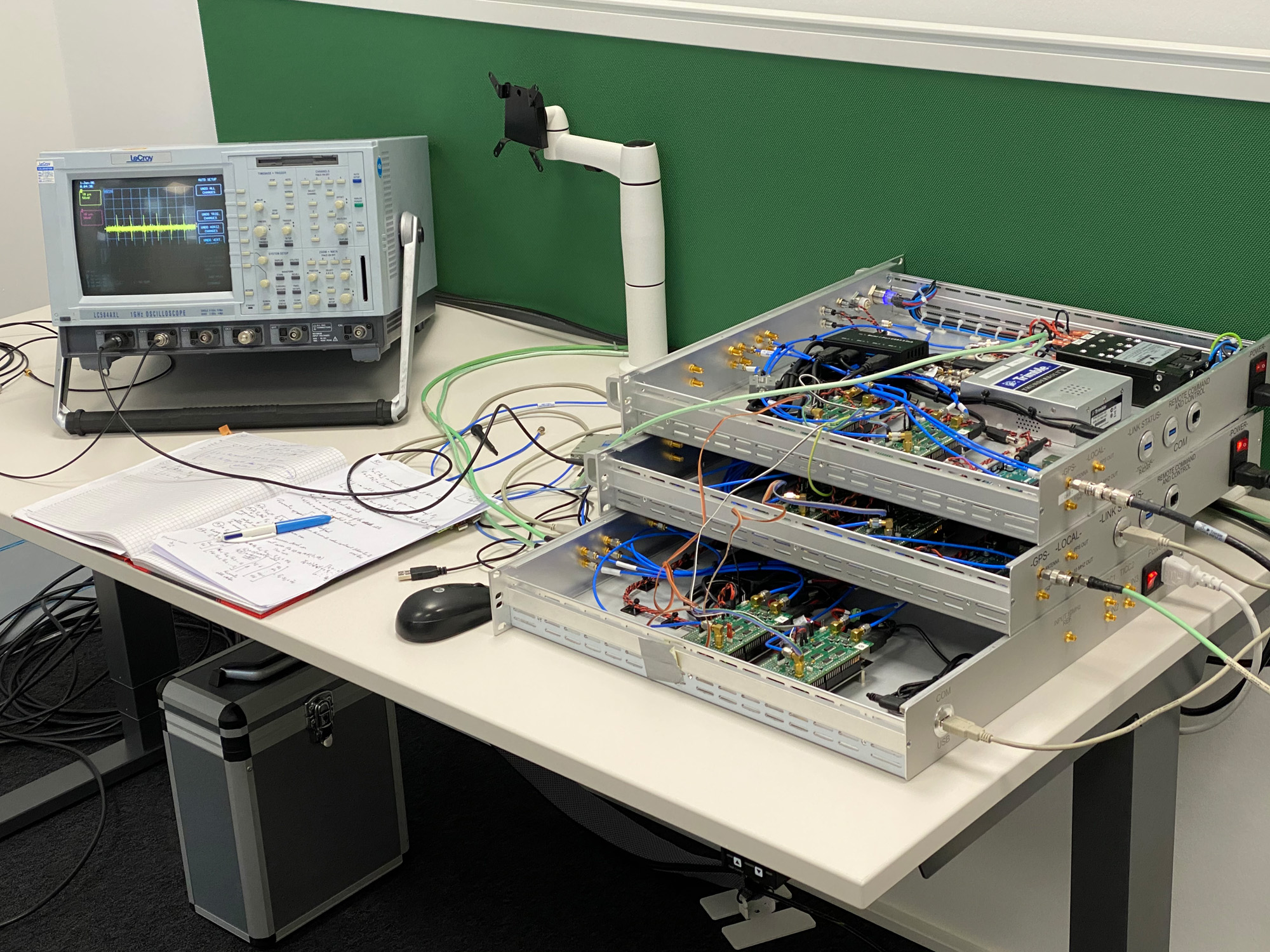Multistatic radar: Timing alternative in case of disturbed GPS reception
People around the world rely on GPS signals – but they are susceptible to manipulation. Researchers at Fraunhofer FHR are developing a timing alternative for multistatic radar.
Without navigation software, many people would be stuck – especially in foreign cities, people are glad to rely on the friendly voice that shows them the way. Even outside of private navigation, the world is dependent on GPS signals and satellite navigation, as they provide very accurate data on position and time. There is also a »but«: GPS signals are very easy to interfere with and switch off – this is called jamming – or to manipulate so that the system thinks it is in a different place. GPS alone is therefore not reliable, especially for critical operations.
However, there is still a lack of alternatives.
Researchers at Fraunhofer FHR are working on such alternatives: The problem occurs with multistatic radar. Here, the transmitting and receiving stations are located in different places, for example on two buildings or on moving platforms such as ships, aircraft or drones. The advantage of multistatic radar over conventional radar is that the different locations can provide more information, for example, stealth aircraft can be detected. The effect is comparable to human eyes, which allow spatial vision through their different positions. Multistatic radar is also more robust against enemy interference and countermeasures and more sensitive to small targets. But it is also much more complex: Above all, times and frequencies must be synchronized – to within a few nanoseconds, sometimes even sub-nanoseconds. In addition, the distance between the platforms must be known precisely. As far as static platforms are concerned, this is not a major problem. However, it becomes difficult with moving platforms. To determine the distance between the two moving radar systems and synchronize their clocks with each other, a master clock sends its time to one or more slave clocks via two-way time transmission technology. Thus, a peer-to-peer solution is being developed in which the platforms synchronize in a closed system. A third-party system such as a ground base station is unnecessary.
What is needed now is a test environment to validate and develop this idea. Strapping the systems onto two aircraft is far beyond the budget, and the effort is also far too high. The researchers have therefore created an alternative: they connect the two clocks, which should actually be on two moving platforms, with copper cables, while an algorithm tricks the systems to think they are moving. In this way, the team has the ability to study moving platforms while they are actually standing still in the lab. In the long term, the team plans to include relativistic effects on this platform. It is also working on implementing navigation via broadcast signals, i. e., using a passive approach.
